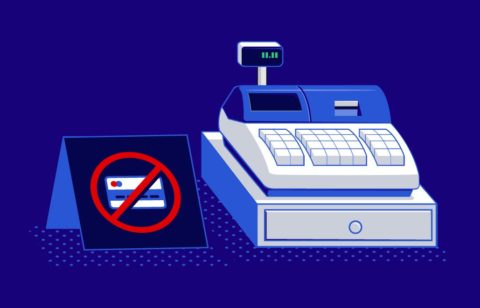Too many Americans are carrying credit card debt. U.S. News & World Report conducted a May 2020 survey to figure out how Americans were affected by debt during the coronavirus pandemic. In the survey, 29% of respondents have used a balance transfer credit card at least once and 23% of those that used one paid off debt or at least paid less interest than they would have without the card.
If you’re struggling with debt on multiple credit cards, consolidating your debt by using a balance transfer credit card may be an option to consider. What does balance transfer mean? We’re here to give you all the details.
What Does Balance Transfer Mean?
A question that comes up repeatedly is what balance transfer means. This is an act of transferring high-interest debt from one or multiple cards to another card with a lower, more favorable interest rate. The goal is to pay off debt faster by having your payments go toward the principal balance instead of toward monthly interest charges. Additionally, if you transfer the balance from multiple cards onto a single card, this makes your payments much easier to manage by having a single monthly payment for all your debt.
Here are a few key facts about balance transfer credit cards:
- Credit card companies accept transfers from other loans besides credit cards.
- A good or excellent credit score is often required for a 0% APR.
- The average fee is 3.04% of the amount you transfer.
- If you can get approved for a low APR and pay off your debt before the regular higher APR takes effect, a balance transfer is typically worth it.
How Does a Balance Transfer Work?
Now that we’ve answered what it means, we’ll go over exactly how it works.
Transferring your debt from one card to another means the balance transfer credit card issuer is paying off your debt with the original lender. This shifts your payment responsibility toward the new lender since your older credit card is now paid off.
You can apply for a balance transfer when you apply for a credit card or while you’re waiting to be approved. However, sooner is better. Many credit card companies offer reduced rates and fees for balance transfers within the first few months of opening the account.
To do a balance transfer, you’ll need:
- The account number or numbers for your existing debt
- How much you wish to transfer
- All your personal information for a standard credit card application, such as name, Social Security number, employment info, and annual income
Once you transfer your debt to the balance transfer credit card, you’re responsible to pay the minimum monthly amount to keep your account in good standing and to keep your lower APR. That being said, you may want to pay higher than the minimum amount to pay off your debt before the higher APR kicks in. This lower APR intro period can be anywhere from 15 to 21 months. Make sure this gives you enough time to pay off all your debt. If you go past the low-rate period, you’ll end up paying extra.
Should I Do a Balance Transfer?
Before picking an issuer, make sure you read the fine print. Double-check the fee because some can be as high as 5% of the amount that you transfer, and look for a no annual fee credit card.
You should also check to see if the lender has limitations on credit limits and if there are any restrictions with certain cards. Credit limits are determined by the issuer’s assessment of your credit along with other factors. You might not be approved for a limit that covers the amount you wish to transfer.





